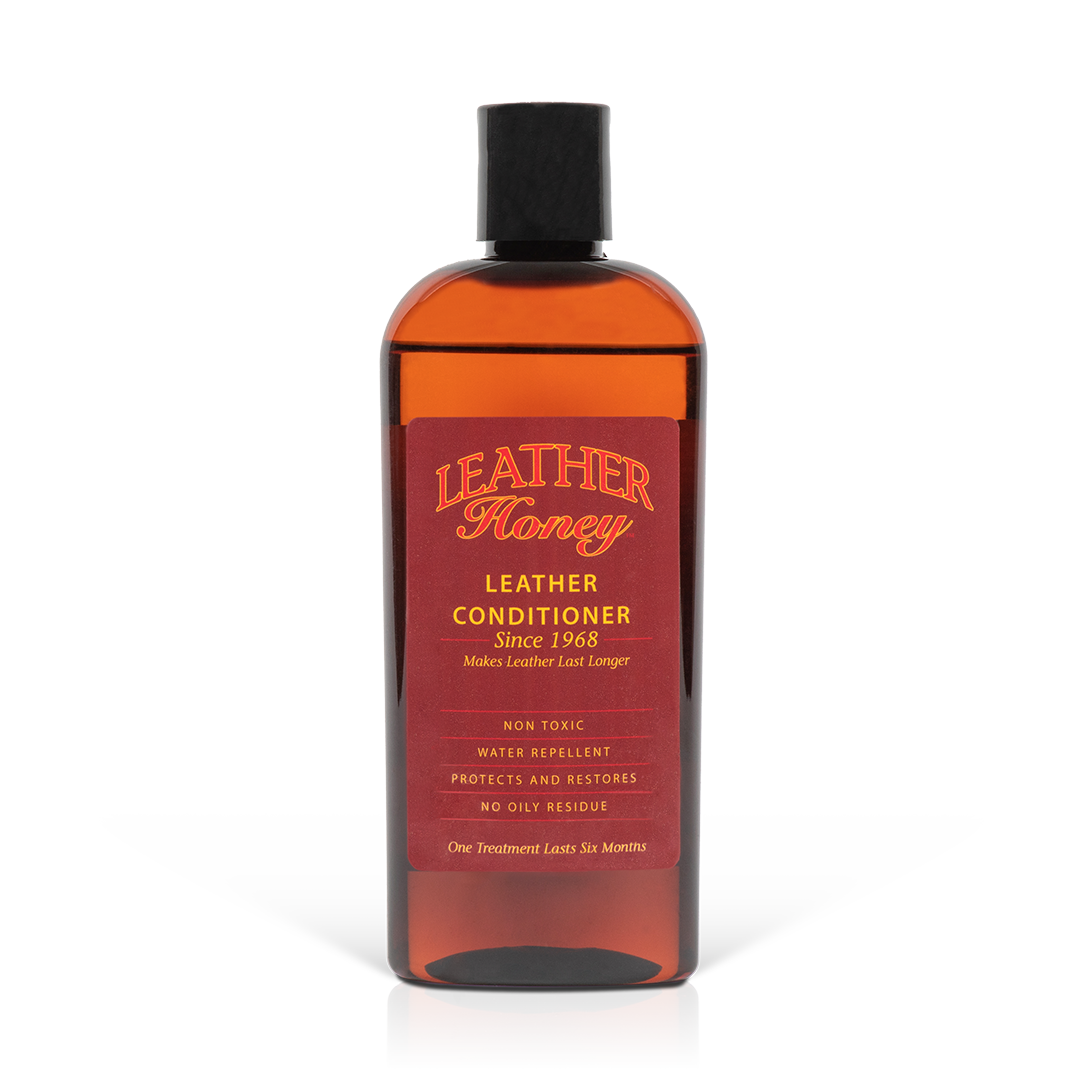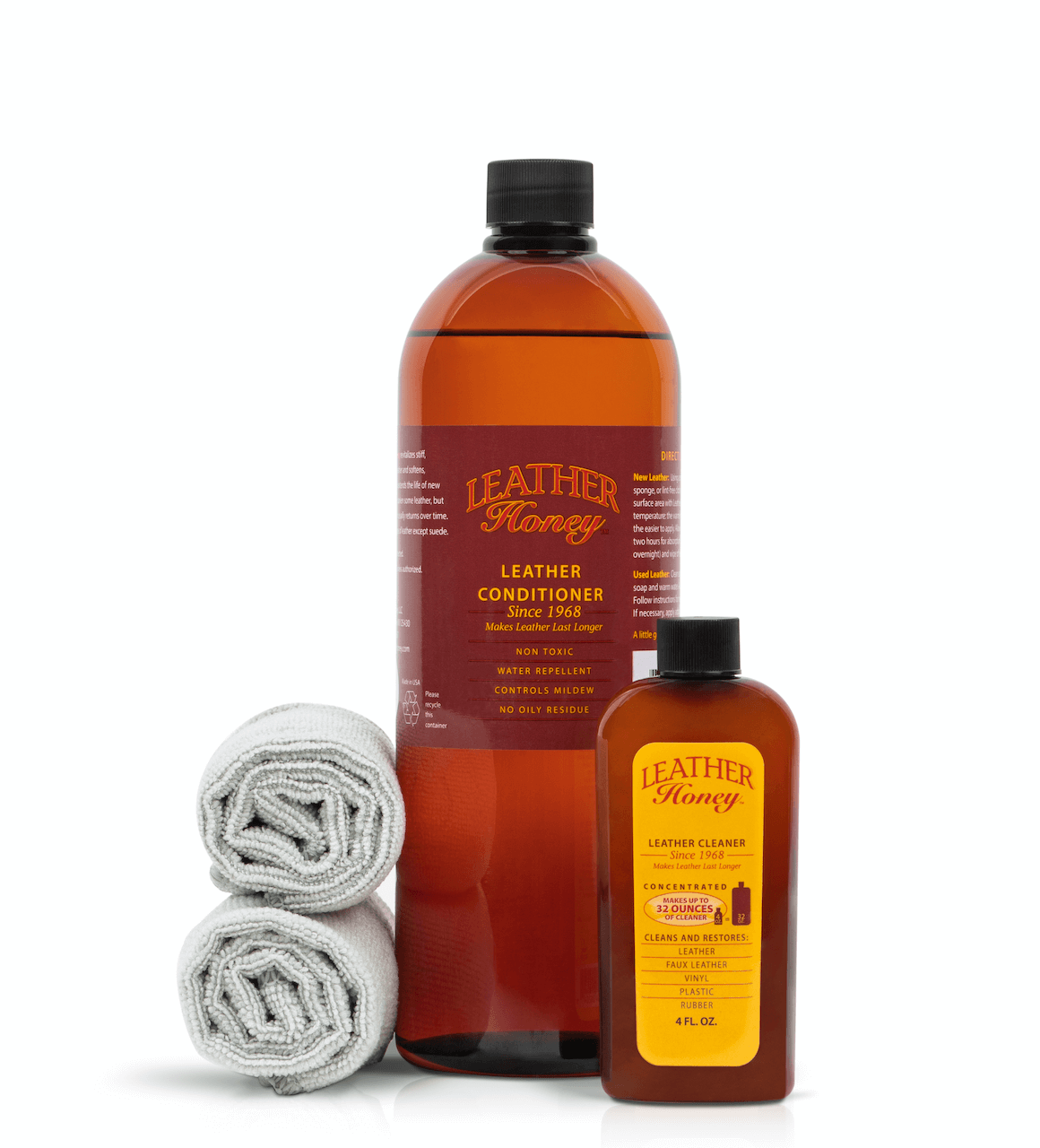How good are you at telling the difference between real leather and faux leather? For most people, it can be difficult to quickly identify one from the other. The ability to distinguish between real vs, fake leather is important not only for the sake of knowing what you are purchasing but also to make sure you are using the correct cleaners and conditioners.
Not all leather cleaner and conditioner can clean all types of leather, much less clean faux leather. Knowing the difference between genuine leather vs. faux leather will save you time and money in the long run.

Types of genuine leather
Genuine leather is made 100 percent from the skins of animals. Within the genuine leather category are three specific types: aniline, semi-aniline and pigmented.
Aniline is very high-quality leather that has a natural, pigment free surface and contains no protective treatment. As a result, aniline is extremely vulnerable to stains. Even water can cause damage to aniline leather, making its cleaning process difficult. That is why it is best to regularly apply Leather Honey – which is water repellent — to prevent stains from happening in the first place. The thorough conditioning process also protects the delicate and valuable leather from cracks and scratches.
Semi-aniline leather is aniline leather, sort of. Unlike aniline leather, this type has a small quantity of pigment. The touch of added pigment is great for maintaining color consistency. The light surface coating makes it more durable than aniline leather, however, it still has the natural appearance of true aniline leather. Cleaning semi-aniline leather is safe, as water can be applied to it without the fear of staining it. With a small amount of soap mixed with water, semi-aniline leather can be easily wiped clean.
Pigmented leather has been coated with a pigment surface so that it retains a shiny and even color. Pigmented and semi-aniline leather are so similar that they are often referred to as each other. For example, a leather retail furniture store may label a pigmented couch as semi-aniline leather. Like semi-aniline leather, pigmented leather is water-resistant so it is incredibly easy to clean and easier to tell if leather is real. Keep in mind that water dries out the leather, which makes it susceptible to cracks and scratches. Therefore conditioning leather thoroughly is necessary immediately after it dries.
Pigmented and semi-aniline leather are generally the leaders in the retail leather industry because they are so easy to maintain and in most cases, more affordable. However, certain people often prefer aniline leather for its higher quality and natural look or feel. It is a matter of personal preference.

Using the best leather care products
Whichever type of leather you choose, remember it requires thorough conditioning. Leather Honey is your best solution for that job. The family-recipe formula deeply penetrates all types of leather and restores the lost moisture. Leather Honey keeps leather looking like new for years and years and can easily (and affordably!) be purchased on this website or on Amazon. Our leather cleaner also uses non-toxic ingredients to clean your faux leather, vegan leather/pleather and genuine leather. If you're looking for the ultimate vegan leather cleaner, Leather Honey is your solution.
Types of fake leather
Faux leather is not porous like real leather is. It is not made from real animal skin like aniline, semi-aniline and pigmented leather.
There are two types of faux leather: polyvinyl chloride (PVC - vinyl), and polyurethane (PU).
Vinyl is a type of fake leather that isn't as breathable as polyurethane and can typically be found on book bindings and even briefcases because of how it repels moisture.
Vegan leather vs. pleather
Pleather, or vegan leather, is the most common type of faux leather. As you have probably already guessed, the p stands for plastic and it's made from either PVC or polyurethane. If you're comparing vegan leather vs. real leather, vegan leather and pleather are less expensive than genuine leather, but they can sometimes be more durable.
When trying to spot fake vs. real leather, it be as simple as reading the label. If you see the words "polyester," "vegan" or "synthetic" it's not real. Doing a touch test is another easy way to spot fake leather because faux leather feels smooth - more like plastic; whereas real leather will feel soft but a bit grainy.
Leather conditioning process
As you can see, the conditioning process significantly differs between genuine leather and faux leather. Using the wrong conditioning application can result in damage to the material so make sure you confirm the type of leather you have before washing and conditioning it.
You May Also Like:












